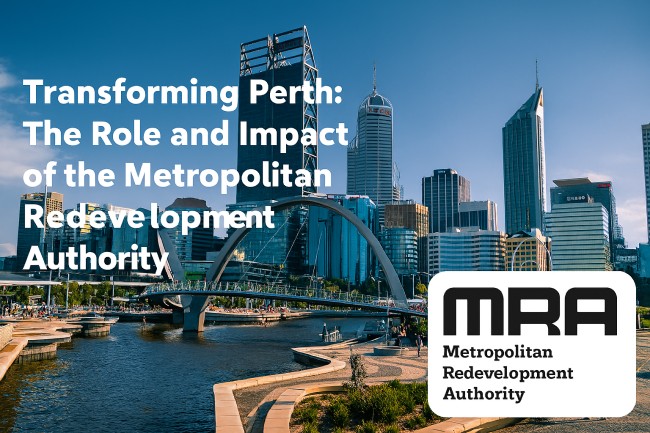Transforming Perth: The Role and Impact of the Metropolitan Redevelopment Authority

The Metropolitan Redevelopment Authority (MRA) has been a pivotal force in shaping the urban landscape of Perth, Western Australia. Since its establishment in 2012, this agency has been at the forefront of revitalising key metropolitan areas through visionary planning, innovative architecture, and collaborative partnerships with local governments, communities, and industry stakeholders. This article explores the MRA’s mission, major projects, structure, and continued influence on Perth’s urban development, providing a comprehensive insight into its vital role in shaping the city’s future.
Understanding the Metropolitan Redevelopment Authority
What is the Metropolitan Redevelopment Authority?
The Metropolitan Redevelopment Authority is a government agency formed to consolidate and lead urban renewal efforts across Perth’s metropolitan regions. It brought together the work of four previous redevelopment agencies responsible for East Perth, Subiaco, Midland, and Armadale. The MRA’s core mission has been to revitalise communities and redefine significant urban precincts, fostering a distinctive sense of character and place that benefits residents and visitors alike.
Founded in 2012, the MRA operates within the Architecture and Planning industry, with a company size ranging between 51-200 employees. Its headquarters are located in the GPO Building, Level 3, 3 Forrest Place, Perth, WA 6000, Australia. The organisation leverages partnerships with local government bodies, community groups, and industry to ensure that urban renewal projects are sustainable, well-designed, and aligned with the long-term needs of Perth.
Key Information about MRA
-
Website: www.mra.wa.gov.au
-
Phone: Specific phone contact details can be found on the official website.
-
Headquarters: GPO Building, Level 3, 3 Forrest Place, Perth, WA 6000, Australia
-
Founded: 2012
-
Industry: Architecture and Planning
-
Company Size: 51-200 employees
-
Specialties: Urban renewal, planning, architectural design, community engagement, land redevelopment
The Vision and Mission of the MRA
Driving Urban Renewal with Vision and Innovation
The MRA was designed not just as a planning body but as a transformative force in Perth’s urban development. Its vision revolves around creating vibrant, sustainable communities by:
-
Encouraging innovative design and architecture.
-
Revitalising neglected or underutilised urban spaces.
-
Promoting economic growth through strategic land use.
-
Enhancing social cohesion by involving communities in planning processes.
-
Working in harmony with local governments to align projects with broader metropolitan goals.
This comprehensive approach ensures that redevelopment projects undertaken by the MRA do more than improve the physical environment; they foster economic, cultural, and social vitality.
Major Redevelopment Projects
East Perth: From Industrial to Iconic
East Perth, once an industrial hub, has been transformed into one of Perth’s most dynamic and desirable areas. The MRA’s efforts here focus on:
-
Creating mixed-use precincts that blend residential, commercial, and recreational spaces.
-
Preserving heritage buildings while encouraging modern architectural interventions.
-
Enhancing waterfront access and public spaces, which have increased the area’s appeal.
This transformation has attracted new residents, businesses, and tourists, making East Perth a vibrant example of successful urban renewal.
Subiaco: Balancing History and Modernity
Subiaco, a historic suburb, has benefited from the MRA’s careful planning to balance preservation with development:
-
Protecting and celebrating the area’s heritage while enabling growth.
-
Improving infrastructure, transport links, and public amenities.
-
Supporting local businesses and cultural activities to maintain a strong community feel.
The MRA’s role here highlights the importance of thoughtful planning in maintaining character while embracing change.
Midland: A Town Centre Reimagined
Midland’s redevelopment has been crucial in repositioning it as a key regional centre:
-
The MRA led projects like the New Junction precinct, connecting Midland Junction railway station with Midland Gate Shopping Centre.
-
These projects have fostered economic revitalisation, encouraging new commercial opportunities and housing developments.
-
Efforts also focus on improving public spaces and transport integration.
Midland’s renewal exemplifies how redevelopment can enhance accessibility and livability in suburban centres.
Armadale: Creating Sustainable Communities
In Armadale, the MRA’s work involves:
-
Encouraging sustainable urban growth with environmentally friendly designs.
-
Engaging with local communities to shape development that meets their needs.
-
Delivering public infrastructure and recreational spaces to improve quality of life.
The Armadale projects illustrate the MRA’s commitment to long-term sustainability and community involvement.
How the MRA Works: Structure and Partnerships
Collaborative Governance
The MRA operates under the Metropolitan Redevelopment Authority Act 2011, granting it the legal power to plan and implement redevelopment projects. Its governance structure includes:
-
A board appointed by the Minister for Lands, ensuring accountability and strategic oversight.
-
Land Redevelopment Committees in each precinct, which involve local government representatives and community members, fostering transparent decision-making and local engagement.
This collaborative framework allows the MRA to integrate community aspirations with government priorities and private sector capabilities.
Driving Innovation through Design and Planning
The MRA employs multidisciplinary teams of architects, planners, urban designers, and community engagement specialists. This collective expertise ensures that redevelopment plans are innovative, practical, and inclusive. Through detailed master planning and design guidelines, the MRA maintains high standards for new developments, emphasising:
-
Sustainable building practices.
-
Context-sensitive design respecting local heritage.
-
Mixed-use developments that promote vibrant, 24/7 communities.
-
Accessible public spaces and green areas.
The Future of Urban Redevelopment in Perth
Transition to DevelopmentWA
In September 2019, the MRA merged with the Western Australian Land Authority (LandCorp) to form DevelopmentWA, a central agency tasked with streamlining and advancing the state’s urban development projects. DevelopmentWA continues the legacy of the MRA, managing ongoing and future projects with a broader mandate across Western Australia.
However, the foundational work of the MRA remains vital, and many of its completed projects continue to serve as benchmarks for successful urban renewal. This transition has enhanced coordination between government agencies, improved resource allocation, and strengthened strategic planning capacity.
Why the Metropolitan Redevelopment Authority Matters
Creating Distinctive Urban Places
The MRA’s work has been instrumental in redefining Perth’s metropolitan areas, turning once-neglected spaces into vibrant hubs of activity and community life. Its approach creates places that are not only functional but also foster a strong sense of identity and pride among residents.
Economic and Social Benefits
By attracting investment and fostering new businesses, the MRA has contributed significantly to Perth’s economic development. Its projects have created jobs, improved housing availability, and enhanced public amenities, directly impacting social wellbeing.
Community Engagement and Sustainability
The MRA’s focus on community involvement ensures that redevelopment projects are not imposed top-down but developed with the people who live and work in these areas. This inclusive approach strengthens community bonds and ensures that growth is sustainable and aligned with local needs.
Connect with the Metropolitan Redevelopment Authority
For professionals and stakeholders interested in following the work and updates from the Metropolitan Redevelopment Authority, the Linkedin Page is a valuable resource. It offers insights into current projects, industry news, and opportunities to engage with the organisation.
Conclusion
The Metropolitan Redevelopment Authority has played a transformative role in shaping Perth’s urban fabric over the last decade. Its visionary planning, commitment to innovation, and collaborative approach have revitalised key areas like East Perth, Subiaco, Midland, and Armadale. While the agency itself has transitioned into DevelopmentWA, the impact of its work remains a cornerstone of Perth’s development strategy.
Through sustainable design, community involvement, and a focus on creating vibrant urban spaces, the MRA has helped Perth evolve into a modern, dynamic city while preserving its unique character. The organisation’s work continues to inspire urban renewal initiatives, making it a key player in Western Australia’s planning and development landscape.
For those interested in urban development, architecture, or community planning, understanding the Metropolitan Redevelopment Authority’s role provides critical insight into how strategic planning can shape a city’s present and future.



